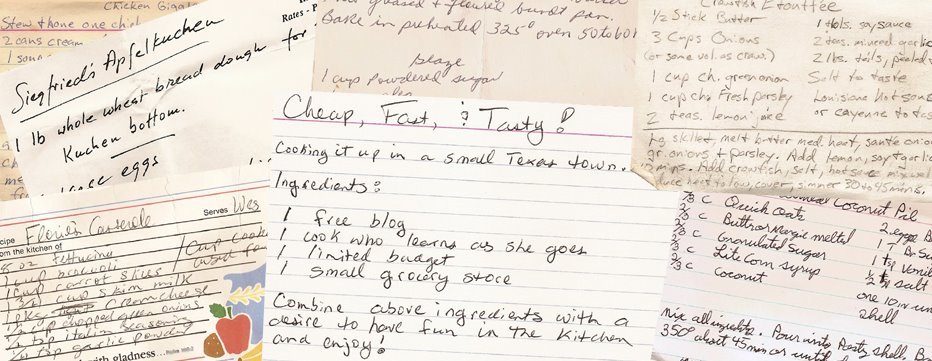
In my Last Entry I'd just made a huge batch of cortido (Mexican style fermented cabbage). I taste tested on Saturday and was very pleased with the results, although it was still quite mild after only three or four days fermenting. Today, for lunch, I made myself some naked fried tilapia (seasoned, no breading, fried in oil) and served myself some cortido on the side. The fish and the cortido go very well together. Got the idea from reading up on how the French serve sauerkraut (they call it choucroute). In France choucroute is frequently serve alongside fish. Not that that's the only way the serve it, of course.
After a few more days of "aging" on the countertop it got spicier and spicier. Delicious! It is crisp, refreshing, and flavorful. Plain sauerkraut tastes decidedly different from the cortido. I can't explain this very well except to say that plain sauerkraut is yet more cool and definitely more sour. The cortido, to me, tasted lighter, a bit more mild, and more flavorful.
I won't eat canned sauerkraut. The texture is very unappealing to me which is why I always thought that I didn't like sauerkraut. This, however, is so fresh and crisp, it's entirely different than the canned stuff. I am getting quite used to fresh fermented cabbage.
I haven't seen a single speck of mold or anything else suspicious looking on my fermented cabbage. I only blogged about the cortido, but a week before making it I also had a batch of kimchee style cabbage fermenting on the counter (which I have since finished off) as well as some plain sauerkraut in the making. Those two batches spent nearly two weeks on the counter before going into the refrigerator. No sign of spoilage, no mold. After leaving them alone for the first three days I tasted them daily until they seemed about right and have put them in the fridge to keep them that way.
Cortido Taste Test
Cortido a.k.a. Mexican Saurkraut. Right here in Brackettville!
I adapted this recipe, making very very few changes, from AskShelley.com.
There's nary a place in the world where people don't ferment cabbage in one way or another. In Germany, fermented cabbage is called saurkraut. In Korea, it's called kimchi. In Mexico, cortido.
Cortido
1 large cabbage, cored and shredded (you can use red, green, or both).
1 cup carrots, grated
2 medium onions, quartered lengthwise and very finely sliced (red, white, or yellow)
4 cloves garlic, minced
1 tablespoon dried oregano
1/2 teaspoon red pepper flakes (I used a teaspoon and a half)
2 tablespoon sea-salt
Mix up all the ingredients in a large bowl. Then pound with a wooden pounder for about 10 minutes to release juices or you can use your hands and just squeeze and squeeze and squeeze until the juices are released and the cabbage starts looking a bit limp.
Place mixture in a container (a crock, glass jars, or some other nonreactive container--I used the crock out of my crock pot) and mash vegetables down tightly. There will be a fair amount of liquid floating on top. You may need to add a little more water (purified or spring--no chlorinated water) to insure that the veggies are completely covered with water. Weigh the vegetables down with a plate if one fits in your container. If you don't have something to weigh it down with, you may just have to keep checking over the next few days to make sure there is water over the vegetables, adding it as needed. If using the a plate, weigh the plate down with rocks (clean rocks, wash them well), a bag of water, or jar of water to keep it from floating. I didn't have a plate that would fit in my crock but I found a large, round, plastic lid that fit into it, although it's a bit too small. I put water in a Ziplock bag and set it on the plastic lid, then covered it all with the crock pot lid.
There are many ways of protecting the vegetables from the air, and the above is the one I have settled on for this batch. But any variation will do - as long as it excludes air. You can even seal it in an airtight container but be warned, this stuff expands! My first batch was leaking right out of the tightly sealed Mason jar I put it in--I hadn't given it enough room to expand in the jar.
Opinions vary on whether or not it should be sealed air tight. You'll just have to experiment to figure out what you prefer. Neither of them seem to be worse or better than the other. Seems to me, however, that the better it's sealed the less mold might grow on top, but that's just a theory. Germans prefer the plate or weight method and covering it with a cheesecloth to keep the bugs out. Koreans seal their kimchi well and bury it underground (where it's cool).
Leave your cortido at room temperature for 3-5 days then taste test. Does it taste good to you? Think it needs to sit a while longer? Then let it. If you like the way it tastes as it is, then transfer it to a container that seals well and put it in the fridge to halt fermentation. It will keep for quite a long time.
Like sauerkraut, cortido improves with age, but can be eaten after the initial ferment.
Don't fret if scum or mold forms on the top of your cortido. Just scrape it off. The fermentation process kills off harmful bacteria. It's only the portion that the air reaches that will form mold. This is why I, personally, prefer an air tight seal.
 Preparing the vegetables woke up my tennis elbow, hubby stepped in to do the pounding for me. Don't fret if you don't have a pounder, just use your hands and SQUEEZE! The point is to break down the vegetables enough to release their juices. Otherwise the mixture takes up more space in your jar and takes longer to ferment. And you have to add a bunch of water instead of letting the vegetable ferment in their own natural juices. The bacteria that lets cabbage become saurkraut, kimchee, or cortido is in and on the cabbage itself. Pounding it or squeezing it releases that wonderful stuff so that the process can begin.
Preparing the vegetables woke up my tennis elbow, hubby stepped in to do the pounding for me. Don't fret if you don't have a pounder, just use your hands and SQUEEZE! The point is to break down the vegetables enough to release their juices. Otherwise the mixture takes up more space in your jar and takes longer to ferment. And you have to add a bunch of water instead of letting the vegetable ferment in their own natural juices. The bacteria that lets cabbage become saurkraut, kimchee, or cortido is in and on the cabbage itself. Pounding it or squeezing it releases that wonderful stuff so that the process can begin. The cabbage, after a thorough pounding, has now been added to the crock. There is a LOT of liquid here that you can't see. When I mash the vegetables into the crock there's about an inch and a half of juices on top. Alas, veggies want to float. Hence the need for a weight to keep it down in the liquid.
The cabbage, after a thorough pounding, has now been added to the crock. There is a LOT of liquid here that you can't see. When I mash the vegetables into the crock there's about an inch and a half of juices on top. Alas, veggies want to float. Hence the need for a weight to keep it down in the liquid.If you just want to make plain old sauerkraut, you can follow all of these same steps but leave out the pepper, oregano, garlic, and onions. Or, you can use onions, cabbage, and apples, or just cabbage and apples or just cabbage and onions. Just play with it. You'll find what you like.
Cabbage is CHEAP CHEAP CHEAP, if you like saurkraut there's no reason not to make it yourself. It takes about 30 to 45 minutes to put this stuff together, preparation is so very simple. And, in three days, you'll have a very healthy side dish full of beneficial probiotics (seen any Activia commercials lately?). Homemade saurkraut, kimchee, and cortido all contain Lactobacilli plantarum. L. planatarum--an extremely beneficial bacteria. It aides digestion and helps keep you regular. Canned saurkraut is pasteurized and all that healthy Lactobacilli plantarum. L. planatarum is destroyed in the process.
If you make it and hate it, you'll be out less than $5 and you'll have wasted less than an hour of your time. If you make it and love it, you'll be doing your body a great favor.
If you're wondering, no, you cannot omit the salt. It's a major component of the fermentation process.
New Years Dinner

Nope, not gonna tell you how to fry a turkey. I've never done it myself and so I am hardly qualified to offer the best tips and techniques on the actual frying--but I have a lot of opinions on the preparation since that's always my job when we fry a turkey.
I didn't take a good photo of it tonight, obviously. Hubby and his nephew were doing the cooking and had only taken it out of the oil for a bit to check the bird with a meat thermometer when I shot this photo. By the time it was done and I could have taken a nice photo of it, I was too hungry to care.
Some opinions on preparing to fry a turkey from a fried turkey fan.
#1. Frying makes a store bought turkey edible. I detest store bought turkey. The breast meat is bland, tasteless, and usually has terrible texture. I won't eat the average grocery store turkey unless it's been fried. Frying makes the bird moist and delectable on the inside and crispity crunchity on the outside. Fried turkey is NOT GREASY. The oil drains off the bird like water off a duck's back. There's no breading to hold the oil in or on it. This is not greasy, oily meat.
#2. To prepare the bird (the men cook it, we girls prepare it) I use a defrosted turkey that hasn't been injected or brined or adulterated in any other way that I can help. I put on plastic gloves and rub it down with oil so that when I add the seasoning it sticks. The gloves save me a lot of messiness, yes, but mostly I wear them so I don't burn my skin with the seasoning. I use sea salt and cayenne pepper--LOTS of cayenne pepper--inside and out. The heat from the cayenne burns off but leaves nice color and flavor. You don't have to be afraid of the cayenne when you eating fried turkey.
#3. Fry two birds. Why not? You've bought the oil, gone to the trouble of setting up the fryer, and by the time you've fried the first you've figured out what not to do and so the second will be easier to fry. Besides, cooked turkey freezes GREAT! Freezing it in small packages to use in casseroles, omelets, soups, or salads will save you a lot of cooking time later on and why shouldn't we get to enjoy turkey in April instead of November?
#4. Hubby and his nephew prefer to inject their turkey with various injectable marinades. I don't care for this. For one, if the bird isn't allowed to rest long enough after injection you end up with too much marinade in one bite and none at all in the next. For another, I don't want to eat honey-garlic flavored turkey, I want to eat turkey flavored turkey. Wes is kind to me in that he always fries two turkeys. One sans injection for me and one that's adulterated for everyone else. Inevitably, however, my turkey is usually the one that gets cooked first and that means it's usually the one that everybody eats for the main meal. The second, injected, turkey ends up getting split into Ziplock bags for people to take home after the family dinner. So far no one has ever complained about lack of flavor in the first turkey and, in fact, the first turkey is always demolished.
#5. The oil is expensive (we used four gallons of cottonseed oil to fry our two turkeys tonight--about $30 worth) but you can cut down on the amount of oil you use by frying smaller turkeys. The bigger the bird, the more oil you will need. Use peanut or cottonseed oil. You can reuse this oil if you are willing to filter it, which I am.
#6. If you are going to fry a turkey, be extra careful. Follow every precaution, read all the instructions, and don't underestimate how dangerous it can be. Be careful where you set your fryer. We made the mistake of frying a turkey on someone's back porch a few years ago and they were very upset by the splattered grease on their concrete slab. I could care less about splatters of grease on my concrete porch--but not everyone is so laid back. Making this stuff is messy. It's going to splatter. Clean up is going to be a pain. But it's so worth it.
Anasazi Beans

Dang, that's a pretty bean.


















